A lot of people swear by them, a lot of people think they’re snake oil and they’re absolutely rubbish.
There is some research that points to compression reducing the early onset of inflammation.
What’s the deal… compression socks or not…
Let’s find out…
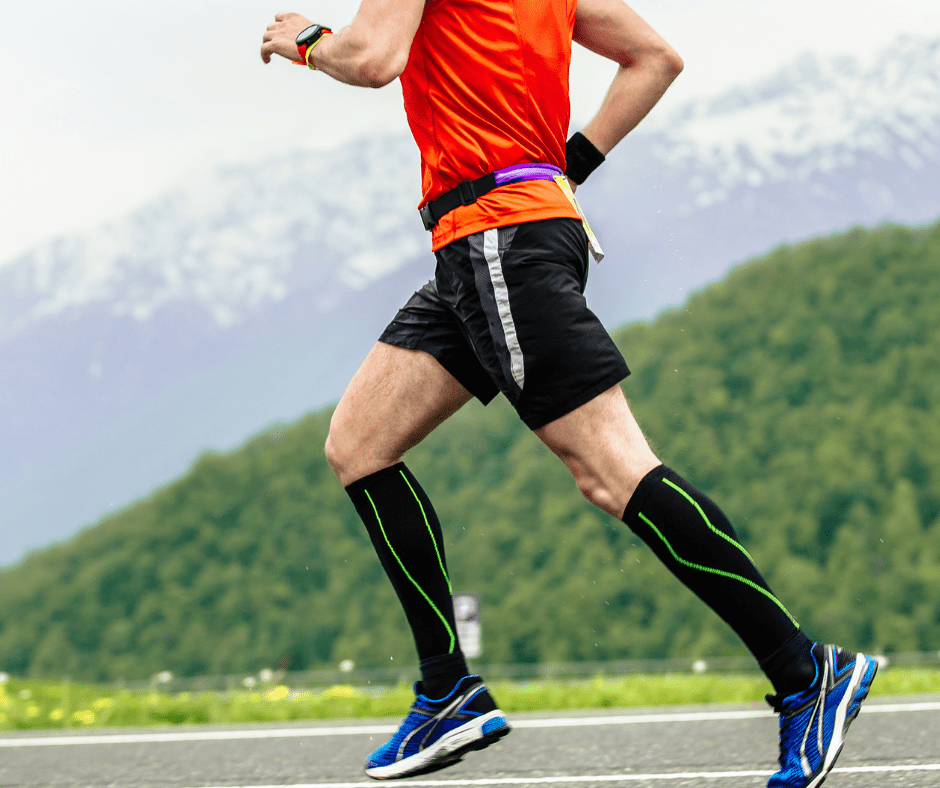
Compression Sock Myths
#1 Compression socks are only for people with varicose veins
Compression socks indeed help prevent spider veins and varicose veins, But compression socks are also for everyday wear. They’re intended to promote healthy circulation.
#2 Compression socks make you feel too hot
By improving circulation, compression socks provide great relief, as well as an immediate feeling of lightness.
#3 Compression socks are a nightmare to get on
Today, new technology and materials make compression socks more comfortable and functional. Some specific standard techniques and tricks make it easy to put them on and take them off.
The Benefits Of Compression Socks
A lot of people report that they’re not nearly as sore if they run longer distances wearing compression socks.
There’s also evidence that post-exercise pain is not as bad if you use compression socks. It’s supposed to also help with circulation.
As I always say to people though, it does come with a warning.
If you are susceptible to something called Compartment Pressure Syndrome or if when you run you do tend to experience quite tight burning calves. Often compression socks don’t help, they make it worse.
It’s one of those things that you’ve got to try, if it feels good and it’s working for you, then roll with it.
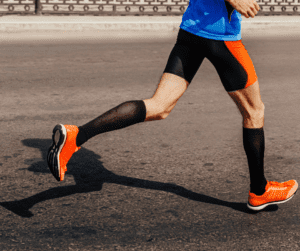
As a recovery modality, there is evidence from some Japanese researchers that show that if we stunt the inflammation process too much, it is slowing down our short-term improvements because the reaction of our body to repair some of that damage makes us stronger and better able to participate or to improve going into the future.
A study in the Journal of Strength and Conditioning Research found that wearing compression socks for 48 hours after a marathon improved performance by 2.6% two weeks after the race.
Will Compression Socks Help Keep You Injury Free?
You might be wondering if it would be advisable to try a pair of compression socks out… to help prevent possible injuries.
If it’s not broken, don’t fix it, or maybe they will help with recovery and perhaps even improved performance.
There’s undoubtedly tons of evidence about how well compression garments work and how much better people feel, particularly calf sleeves, compression tights, and compression boots.
So it’s worth trying out.
Compression socks apply pressure on your ankles and calves. The soft squeeze on the bottom of your circulatory system helps support your veins as they send blood back up to your heart.
You might be surprised to hear that if you go into Europe, particularly on the triathlon scene, it’s much harder to spot people who aren’t wearing compression gear than it is to spot compression gear.
Whether it’s a gimmick or not, that’s hard to say. I haven’t come across any hard scientific evidence, but certainly, loads of athletes have said they feel miles better when they run in compression garments. So it’s worth trying out.
What You Should Be Aware Of When Trying Compression Socks
As we mentioned above, there are a few things to be aware of when wearing compression socks,
some people are susceptible to a condition known as compartment pressure syndrome, where the muscle swells up and gets hard. You lose a bit of function, associated with numbness, and those people tend, or should I say that compression gear tends to worsen those symptoms.
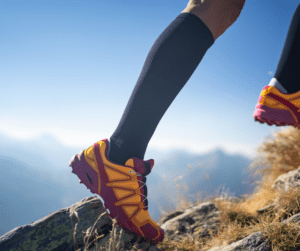
But, if it’s going well and you’re injury-free and enjoying your running, it’s still worth trying.
Research shows that compression socks do help muscles feel better and have less muscle damage, they provide support over the long term.
Worth a try, very unlikely to cause harm, unless you are one of those that are predisposed to compartmental pressure syndrome.
- But if that happens, then you just don’t use the compression gear.
There’s enough evidence in the literature to show that wearing compression gear after running helps speed up recovery. So even if you can’t run in them or you don’t like running in them, you can use them after your training.
Can Compression Socks Help Shin Splints?
You may be surprised to hear this, but the truth is, compression socks can aid in the recovery of shin splints and be used as a preventative measure.
Some compression socks are better to use while running, while others are designed for recovery.
It’s important to note that they will not cure any condition if the only thing you are doing to help your injury is wearing compression socks.
All injuries should be assessed so that the real cause can be addressed.
How To Get Rid Of Shin Splints
Shin splints are normally caused by one of the muscles that are running down the tibia. Typically it is the medial or inside of the shin that normally hurts.
The connective tissues between the muscle and the shin become inflamed and it starts to pull away from the shin, causing shin pain.
That is the pain that you are feeling.
(Side note: extreme levels of pressure and tightness may indicate compartment syndrome)
There is, therefore, pressure running through the tibia…
If we don’t treat it and you keep running through the pain, shin splints will ultimately turn into a pre-stress fracture (which is a little bit of bony oedema and bleeding on the actual bone).
To heal shin splints from the acute phase can take anywhere in the region of 48 hours to two weeks, depending on how far you pushed yourself into the pain.
To ease your pain in less time and prevent further trouble, you can wear compression socks as they boost blood circulation, support your veins, and reduce swelling but we recommend you also see a physiotherapist.
If shin splints are something you’re struggling with then you’ll probably want to have a look at this extensive article that we’ve written called How To Get Rid Of Shin Splints FASTS.
Do Shin Splints Go Away The More You Run?
A major issue with shin splints is people tend to ignore the pain.
Pain is a signal from your body telling you something isn’t right…
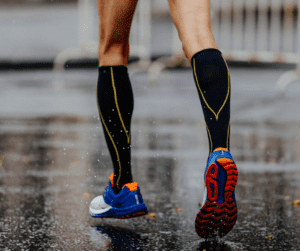
Runners think it will get better as they get a little bit fitter but that is generally not the case. This is why people often end up with quite a serious case of shin splints.
The good news is, that even if it is serious, it shouldn’t take more than two weeks to deal with the actual pain.
Who Should Not Wear Compression Socks?
Compression socks aren’t for everyone, and research suggests that using them incorrectly can be harmful.
Here are some potential risks to be aware of:
- Can cut off your circulation if they aren’t fitted properly.
- Can chafe and bruise your legs if you have dry skin.
- Can cause itching, redness, and irritation if not fitted correctly.
Top 5 Compression Socks Comparison 2022 (In no particular order)
Zensah Compression Leg Sleeves – $40
- Wear them after your activity as the perfect recovery leg sleeve.
- Calf support and injury prevention for the lower leg
- Improve circulation and faster muscle recovery
- Sun and UV Protection
- Moisture-wicking and anti-odor
Feetures Graduated Compression Socks – $45.00
- Targeted Compression and anatomical design provide an unmatched Custom-Like Fit.
- Anatomical right and left foot designs enhance fit, delivering maximum comfort and protection by helping to eliminate blisters.
- High-density cushioning provides cushioned comfort without the bulk.
Run Forever Sports Calf Compression Sleeves – $17.99
- Enhanced blood circulation as a result of improved venous return which improves blow flow of oxygen-rich blood.
- The non-slip cuff and seamless construction create the perfect fit
- Made with premium material so they are built to last
- Keeps muscles warm and loose so you can maximize performance
Swiftwick Aspire Twelve – $23.99
- The thin profile is designed to fit into any technical shoe with a barely-there feel.
- Firmly hugs the contours of your feet to support the arch and help reduce fatigue.
- Built to provide maximum breathability with signature fibers that wick-moisture, keeping your feet cool, dry, and blister-free.
Physix Gear Sport Compression Socks – $17.99
- Inexpensive
- Gradient compression


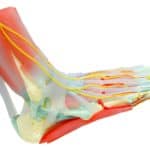

Comments are closed.